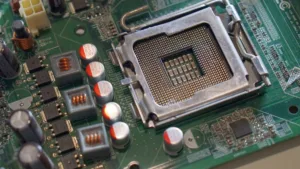Welcome to our comprehensive guide on Octreoscan, a valuable medical imaging technique used in the diagnosis and management of certain conditions. In this article, we will delve into the intricacies of Octreoscan, its uses, benefits, and frequently asked questions. Let’s explore!
What is Octreoscan?
Octreoscan, also known as Octreotide scintigraphy, is a nuclear medicine imaging procedure that utilizes a radioactive substance called Octreotide. Octreotide is a synthetic peptide that mimics somatostatin, a natural hormone. Somatostatin inhibits the release of various hormones in the body. Octreoscan involves injecting a small amount of Octreotide labeled with a radioactive marker into the patient’s bloodstream.
How Does Octreoscan Work?
Octreotide, which is tagged with a radioactive compound, travels through the bloodstream and binds to specific cell receptors, known as somatostatin receptors, which are often found in certain tumors, particularly neuroendocrine tumors. The radioactive emissions from the bound Octreotide are then detected using a special camera called a gamma camera.
Applications of octreoscan:
Octreoscan plays a crucial role in the diagnosis, staging, and monitoring of various conditions:
- Neuroendocrine Tumors: Octreoscan is highly effective in identifying and localizing neuroendocrine tumors in the body. These tumors can be quite challenging to detect using other imaging methods.
- Carcinoid Tumors: Octreoscan is particularly useful for detecting and visualizing carcinoid tumors, which are a type of slow-growing neuroendocrine tumor.
- Gastrointestinal Tumors: It aids in detecting tumors in the pancreas, intestines, and other parts of the gastrointestinal tract.
- Pituitary Tumors: Octreoscan can be used to locate certain types of pituitary tumors, such as those that produce excessive growth hormone.
Advantages of octreoscan:
Octreoscan offers several advantages that make it a valuable diagnostic tool:
- High Sensitivity: Octreoscan is sensitive in detecting tumors even at their early stages, allowing for timely intervention.
- Precise Localization: It provides accurate information about the location and extent of tumors, aiding in treatment planning.
- Non-Invasive: Octreoscan is a non-invasive procedure that avoids the need for surgical exploration.
Limitations and considerations:
While Octreoscan is highly effective in certain scenarios, it may not be suitable for all cases. Factors such as the type of tumor and its size can impact the success of the scan. Additionally, the use of radiation necessitates careful consideration, especially for pregnant individuals.
Frequently Asked Questions (FAQs):
Q: Is Octreoscan painful?
A: No, Octreoscan is not painful. The procedure involves the injection of a radioactive solution, which is usually well-tolerated by patients.
Q: Are there any side effects of Octreoscan?
A: Most patients do not experience significant side effects. There might be some mild discomfort at the injection site, but this is temporary.
Q: How long does an Octreoscan procedure take?
A: The procedure itself typically takes a few hours. However, you might need to stay at the imaging center for a while to allow the radioactive substance to circulate through your body.
Q: Is Octreoscan safe during pregnancy?
A: Generally, Octreoscan is not recommended for pregnant individuals due to the use of radiation. If you are pregnant or suspect you might be, it’s essential to discuss the potential risks and benefits with your healthcare provider.
Q: Can Octreoscan be used for all types of tumors?
A: Octreoscan is most effective for neuroendocrine tumors that express somatostatin receptors. It might not be as useful for tumors that do not have these receptors.
Q: How soon will I get my Octreoscan results?
A: The timing of receiving results can vary. Your healthcare provider will discuss the timeline with you, which may depend on factors like the facility’s protocols and the urgency of your case.
Conclusion:
Octreoscan is an invaluable tool in the realm of medical imaging, offering insights that can significantly impact the diagnosis and management of various conditions, particularly neuroendocrine tumors. Its non-invasive nature, high sensitivity, and ability to provide precise localization make it a preferred choice for many healthcare professionals. If you are advised to undergo an Octreoscan, your healthcare provider will guide you through the process, addressing any concerns you might have.
Viz také:






